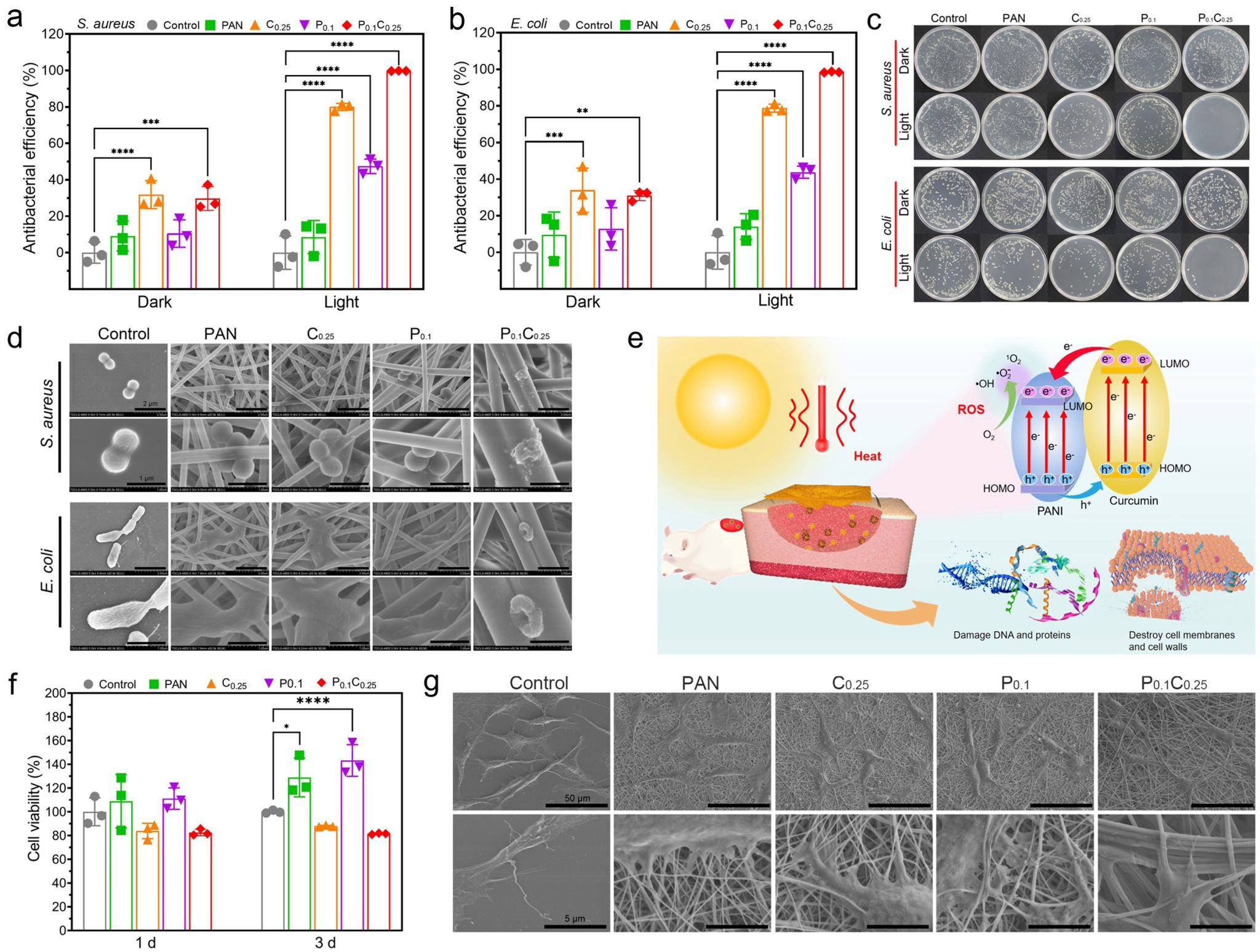Recently, the Metal Functional Materials Group led by Professor Zhu Shengli from the School of Materials Science and Engineering at Tianjin University, in collaboration with Professor Wu Shuilin from Peking University, published a research paper titled "Interfacial electronic modulation on polyaniline/curcumin fiber for photo-powered rapid wound healing" in the internationally renowned materials journal Nano Today. Liu Hanpeng, a doctoral student from the class of 2022, is the first author of this paper.
As basic necessities in the daily lives of human beings, functionalized fabrics that are widely employed for clothing, shoes, bedding, and related products, such as masks and wound dressing, are becoming increasingly important and in demand. With the outbreak of microbial caused diseases, public health has been at the forefront of global safety research. Under the threat of this harsh microbial environment, especially bacteria or viruses, antibacterial multifunctional fabrics urgently need to be developed. As a basic barrier, fibers can hinder the spread of bacteria and reduce contact with the human body. Importantly, fibers are also intended to have the ability to kill bacteria, even eliminate inflammation, and promote faster wound healing, especially as wound dressings. However, it is difficult to eliminate the risk of bacterial infection. Thus, it is necessary to develop antibacterial fibers for the manufacture of personal protective equipment, including surgical dressing, masks, and protective suits.
Presently, the common antibacterial fibers mainly rely on the addition of antibacterial metal ions, oxides, and antibiotics, such as Cu, Ag, metallic oxides, and metronidazole. However, these antibacterial fibers have high potential toxicity, low long-term use efficiency, and are environmentally harmful. To achieve superior antibacterial efficacy in applications, it is imperative to develop user-friendly, safe, and wearable antibacterial fibers, complemented by innovative strategies, such as light, sound, and microwave.

Fig. 1. The morphology of electrospinning fibers. (a) Electrospinning nanofibers. (b) The flexibility of P0.1C0.25 nanofiber. (c) Optical photographs of P0.1C0.25 nanofiber. (d) Fluorescence image, scale bar: 50 μm. (e) SEM image, scale bar: 20 μm. (f) TEM image of P0.1C0.25 nanofiber, and corresponding elemental mapping. (gi), scale bar: 500 nm.

Fig. 2. Antibacterial test and biosafe assay of different fibers. (a) Antibacterial tests of S. aureus (s) and E. coli (b). (c) Spread plates of S. aureus and E. coli treated with Control, PAN, P0.1, C0.25, and P0.1C0.25 nanofibers without and with illumination (0.1 W cm−2) for 20 min. (d) SEM and enlarged images of S. aureus and E. coli treated by light irradiation, scale bars: 2 μm and 1 μm. (e) Antibacterial mechanism and application. (f) Cell viability cocultured with different fibers. (g) SEM and enlarged images of cells, scale bars: 50 μm and 5 μm. Data are presented as mean values ± SD (n = 3 independent samples per group). *p < 0.05, **p < 0.01, ***p < 0.001, ****p < 0.0001.
In this study, we combined Cur with PANI (PANI-Cur) by constructing intermolecular hydrogen bonds and electrostatic interaction to produce electrospinning nanofibers with antibacterial effect, taking advantage of electrospinning fibers with large specific surface area, high porosity, and high production efficiency. Based on the energy level differences between PANI and Cur, we modulated the interfacial electrons, thereby enhancing the production of photocatalytic reactive oxygen species (ROS), and elucidated the interactions between different forms of PANI and Cur through density functional theory (DFT) calculations. This PANI-Cur hybrid nanofiber showed an excellent sterilization effect against 99.77 % ± 0.10 % of Staphylococcus aureus and 98.45 % ± 0.27 % of Escherichia coli under light irradiation, significantly improving the defect of low antimicrobial activity of single Cur fiber. This work could provide a reference for the preparation of intelligent antibacterial fibers.
文章链接:https://doi.org/10.1016/j.nantod.2024.102397
文章DOI号:10.1016/j.nantod.2024.102397